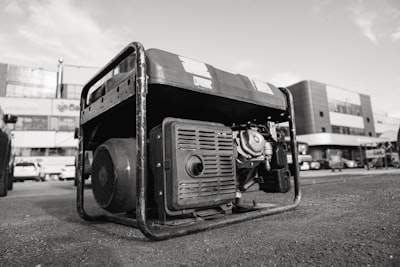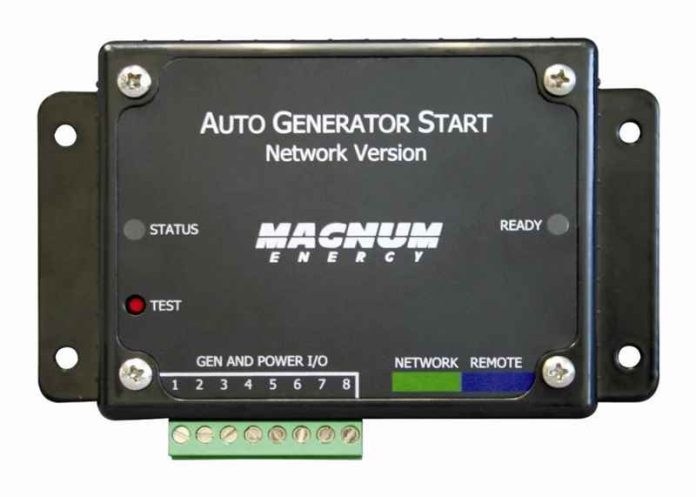Table of Contents
Introduction

Imagine the peace of mind you’d have, knowing that even in the most remote camping locations, your camper van’s essentials are protected by a reliable power source. A backup generator auto-start system offers exactly that – a safeguard against unexpected power outages and the freedom to enjoy the great outdoors without worry. Within this article, we delve into the intricacies of selecting, installing, and maintaining an auto-start system that will bring convenience and comfort to your RV adventures.
a safeguard against unexpected power outages and the freedom to enjoy the great outdoors without worry.
We’re covering everything from the basics of RV generators to detailed installation steps. You’ll find answers to FAQs and recommendations for top-notch products that complement the diverse models of camper vans out there. By the end, you’ll be equipped with the knowledge to enhance your RV’s functionality significantly.
Understanding RV Generators
Different types of RV generators
RV Generators come in various shapes and sizes, each designed to meet specific needs. The most common types are portable generators, inverter generators, and built-in RV generators. Portable generators are versatile and can be used for other purposes, while inverter generators are known for their quiet operation and fuel efficiency. Built-in RV generators, on the other hand, offer convenience as they are integrated into your vehicle, but they tend to be pricier.
Benefits of having an RV Generator
An RV generator in your camper van ensures that you have access to power whenever you need it. It allows you to run air conditioning, heat, refrigeration, and charge devices, which is essential for both comfort and safety during your travels. Furthermore, it gives you the ability to stay off-grid for extended periods, opening up a wider range of camping locations.
Factors to consider when selecting an RV generator
When choosing a generator for your RV, consider power output, noise level, fuel type, size, and weight. Power output should match your energy needs, while noise level is important for maintaining the tranquility of your campsite. Fuel type can affect availability and cost, and size and weight are crucial for portability and storage within your camper van.
Understanding Auto-Start Systems
Auto-start systems, or Automatic Generator Start Systems (AGS), are add-ons for RV generators that automatically start and stop the generator based on certain conditions. These conditions can include low battery voltage, high power demand, or specific time intervals. Auto-start systems offer several benefits, including:
1. Convenience: With an auto-start system, you don’t have to manually start and stop your generator. It will automatically turn on when power is needed and turn off when it’s not, providing a seamless power supply without any effort on your part.
2. Energy efficiency: Auto-start systems can help optimize fuel consumption by starting the generator only when necessary. This can save you money on fuel costs and reduce the environmental impact of your travels.
3. Battery protection: Auto-start systems monitor your RV’s battery voltage and can start the generator if the battery level drops too low. This ensures that your batteries stay charged and extends their lifespan.
4. Remote operation: Many auto-start systems come with remote control capabilities, allowing you to start and stop your generator from inside your camper van or even from a distance. This adds convenience and flexibility to your camping experience.
Installing the Backup Generator Auto-Start System
Choose the right auto-start system
Research different auto-start systems available on the market and select one that suits your needs and preferences. Consider factors such as compatibility with your generator, ease of installation, and additional features.
Necessary tools and equipment
To install a backup generator auto-start system, you’ll need basic tools like screwdrivers, pliers, a drill, and possibly wire strippers. Additionally, you’ll need the auto-start kit specific to your generator model, which typically includes a control module, wiring harness, and possibly additional sensors.
Step-by-step installation guide
1. Read the manual thoroughly: Before beginning the installation process, read the manual that came with your auto-start system. Familiarize yourself with the components, wiring diagrams, and any specific instructions or precautions.
2. Mount the control module: Locate a suitable location near the generator to mount the control module. Ensure it is protected from the elements and securely fastened in place. Follow any specific mounting instructions provided in the manual.
3. Connect the wiring harness: Using the wiring harness provided with the auto-start system, connect the appropriate wires to the generator’s terminals. Refer to the kit’s schematic or the generator’s manual for guidance on which terminals to connect to. Ensure all connections are secure and properly insulated.
4. Attach sensors: If your auto-start system includes temperature or voltage sensors, attach them to the designated locations on the generator or other relevant components. Follow the instructions provided in the manual to ensure proper installation.
5. Configure the control panel settings: Access the control panel of the auto-start system and configure the settings according to your preferences. This may include setting the desired start and stop conditions, adjusting sensitivity levels, or programming any specific functions or alarms. Consult the manual for detailed instructions on how to navigate and configure the control panel.
6. Secure connections and add additional components: After testing and confirming the functionality of the auto-start system, secure all connections by tightening any loose nuts or bolts. Additionally, if desired, install any additional components such as a remote start switch or monitoring device according to the instructions provided.
By following these step-by-step instructions, you can successfully install an auto-start system for your generator. Remember to always consult the manual and follow any specific instructions provided by the manufacturer to ensure a safe and efficient installation process.
Common challenges and how to overcome them
One challenge might be finding a suitable location for the control module that’s both accessible and shielded. Another could be dealing with complex wiring if you’re not experienced. In such cases, it’s helpful to label wires before disconnecting anything and take pictures for reference. If you feel overwhelmed, don’t hesitate to seek professional help.
Safety considerations during installation
Safety is paramount when working with electrical systems. Always disconnect the battery and ensure the generator is off before starting. Use insulated tools to prevent shocks and wear protective gear. Be aware of fuel lines and potential fire hazards, and work in a well-ventilated area to avoid inhaling fumes.
Testing and Maintenance
How to test the auto-start system
After installation, test the system by simulating a power loss or by using the manual start feature on the control panel. Ensure the generator kicks in automatically and that all connected appliances receive power. Also, check that the system stops the generator once power is restored or the batteries are fully charged.
Regular maintenance tips for optimal performance
Regular maintenance involves checking connections, ensuring the firmware is updated, and inspecting for wear and tear. Clean the components periodically and replace any faulty sensors. For the generator itself, adhere to the manufacturer’s guidelines for oil changes, filter replacements, and general upkeep.
Troubleshooting common issues
Should the auto-start system fail to engage, first check the battery and connections. Review the error codes on the control panel, if available, and consult the manual for specific issues. Sometimes, a simple reset can resolve a glitch, but persistent problems may require technical support.
If you encounter further issues with your generator not starting automatically, it could be due to a variety of reasons. These may include low oil levels, an empty fuel tank, choke malfunctions, clogged fuel valves or carburetors, faulty spark plugs, dead batteries, or unclean air filters. Additionally, a nearly discharged coach battery, poor connections, defective cables, or a starter solenoid in need of service could also be culprits.
Product Recommendations
Recommendations for reliable products and brands
For reliability and customer support, brands like Cummins Onan, Honda, and Generac come highly recommended. They offer a range of generator auto-start kits that cater to various needs and are known for their durability and ease of use.
Considerations for compatibility with different camper van models
Compatibility largely depends on the space available for installation and the electrical system’s specifications. It’s important to check the generator’s size and power requirements against your RV’s capabilities before making a purchase.
Conclusion
Recap of the benefits of having a backup generator auto-start system
Installing a backup generator auto-start system introduces a layer of convenience and security to your RV experience. It ensures continuous power, supports off-grid adventures, and contributes to the overall comfort and safety of your travels.
It ensures continuous power, supports off-grid adventures, and contributes to the overall comfort and safety of your travels.
Encouragement for readers to make their campervan adventures more convenient and enjoyable
With the knowledge you’ve gained today, taking the step to enhance your camper van with an auto-start system is a decision that promises to yield immense benefits. Whether it’s the serenity of an uninterrupted power supply or the freedom to explore beyond the beaten path, the upgrades discussed will surely elevate your camping experience. Feel empowered to embark on this DIY project and make your camper van a true home away from home.
FAQ
What is an Automatic Generator Start (AGS) system and how does it work?
An AGS system monitors your RV’s house battery bank and automatically starts the generator when the battery level is low, ensuring the batteries don’t deplete completely and maintain necessary power reserves.
Can an AGS be installed as a standalone device?
Yes, standalone devices like the ME-AGS-S from Sensata can be used, which activate the generator based on specific conditions, such as low battery voltage or high temperature.
What is generator prep for an RV?
Generator prep typically includes pre-wiring for a transfer switch, electrical wires, fuel supply, and a galvanized box for a permanently mounted generator, as well as a start/stop switch and hour meter inside the RV.
Why are standby generators useful and what fuels do they use?
Standby generators automatically supply power during an outage without manual intervention and commonly use fuels like natural gas or propane.
How often should I exercise my RV generator and why?
It’s recommended to run your generator once a week or once a month for about 30 minutes to ensure it stays in good working condition.
What could prevent my RV generator from starting automatically?
Several issues could cause this, including low oil levels, an empty fuel tank, choke malfunctions, clogged fuel valves or carburetors, faulty spark plugs, dead batteries, unclean air filters, a nearly discharged coach battery, poor electrical connections, defective cables, or a starter solenoid that needs service.
How do I know what size and type of generator I need for my RV?
The size and type depend on the capacity to run all your appliances simultaneously and other specific requirements of your RV.
What advanced features do modern RV generators offer?
Some systems like the EC-AGS+ RV Auto Generator Start System from Cummins allow remote monitoring and management and can detect low deep-cycle battery charge to automatically start the generator for recharging.





